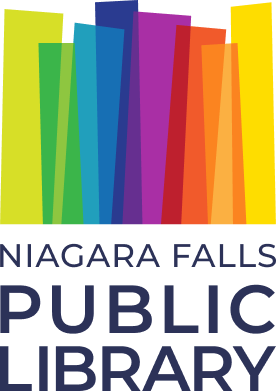History of Niagara Falls illumination goes back more than a century
Column written by Cathy Roy, Local History Librarian, originally published in Niagara this Week on Thursday, December 1.
Every evening, as the sun begins to fade, the American and Horseshoe Falls are spectacularly bathed in light. It is a sight to behold for visitors and residents alike as they take in the stunning display of ever-changing colours. It is hard to believe that the first endeavour to illuminate the Falls was made more than 160 years ago.
In the summer of 1860, the first attempt to illuminate the cataracts was made in honour of the royal visit of the Prince of Wales. In total, 200 Bengal lights (similar to flares) were used with some placed in a row facing the American Falls and some under Table Rock. Some were even placed behind the Horseshoe Falls. A London reporter waxed poetic about the spectacle, saying “the light shone with such dazzling brilliancy that the water looked like a sheet of crystal glass, a cascade of diamonds, every bead and stream leapt and sparkled.”
It wasn’t until 19 years later that another attempt was made to illuminate the Falls for the royal visit of Princess Louise and her husband the Marquis of Lorne, who was the Governor-General of Canada. This time, electric light was used for the first time when 16 arc lights produced a total of 32,000 candle-power.
In the following years, other groups such as the Maid of the Mist (1892), the Great Gorge Route, the Pan-American Exposition in Buffalo (1901) as well as the Mayor of Niagara Falls, N.Y. (1907) used various technologies to temporarily illuminate the Falls. It wasn’t until 1925 that something more permanent was sought.
In 1924, extensive studies commenced and in 1925, the Niagara Falls Illumination Board was formed. Both Niagara Falls, N.Y. and Ontario were members as well as the Niagara Parks Commission and the Hydro Electric Power Commission. Installed on the overflow tower of the Ontario Power House in Queen Victoria Park, the 24 great carbon arc lamps produced an impressive total of 1.32 million candle-power. Illumination was briefly interrupted during the huge ice jam that hit the Ontario Power House in 1938, as well as during the Second World War (for security reasons), but it has occurred continuously since October 1944.
In the years that followed, many more improvements occurred as technology advanced. In 1958, 20 new carbon arc lights were installed by the General Electric Company of Canada at a cost of $150,000. The new lights were able to provide 15 different colour combinations and produced 4.2 million candle-power. More upgrades occurred in the 1970s and in 1997.
The most recent upgrade came in 2016. In early December, the Niagara Falls Illumination Board unveiled its newest upgrade that featured 100 panels of LED lights that provided twice the power of the old Xenon spotlights while using 60 per cent less energy. The new lights manage to illuminate the waterfalls without bouncing off the dense mist.
The Falls are often lit in special colours for many registered charities wishing to mark a significant date in support of their cause. This occurred for the first time in 2004 when Estee Lauder approached the Niagara Falls Illumination Board to request that the lights be turned pink for a night as part of the company’s Breast Cancer global event. Today, charitable groups are able to book a special colour (or colours) for a 15-minute block per night on a first-come, first-served basis. If you haven’t been in a while, it might be worth another nocturnal visit to the Falls since no two light shows are ever the same.

